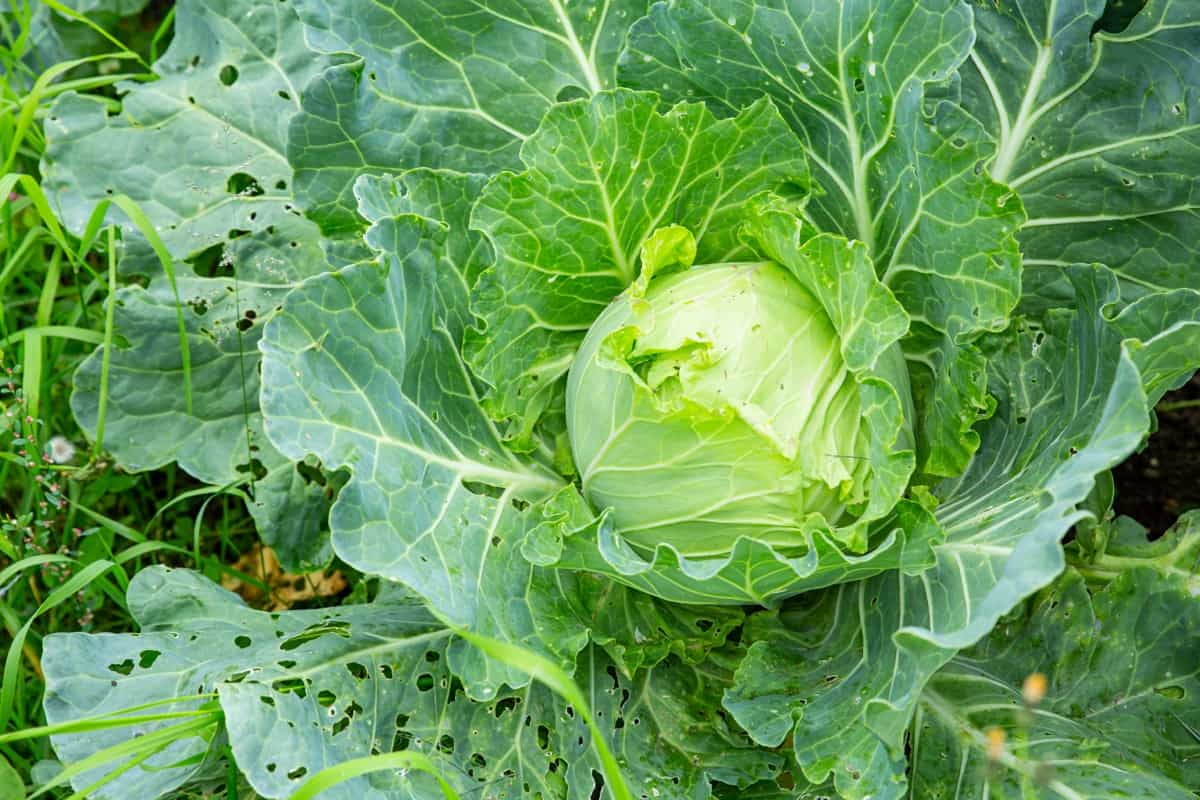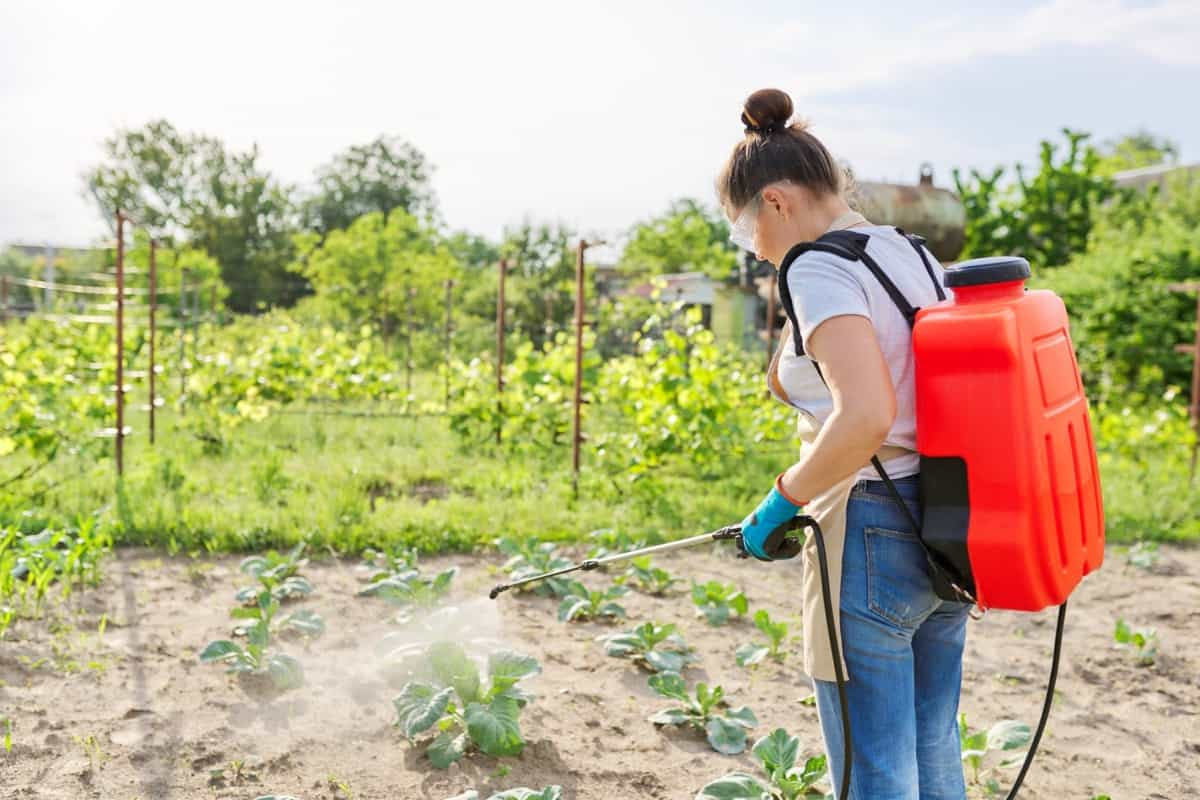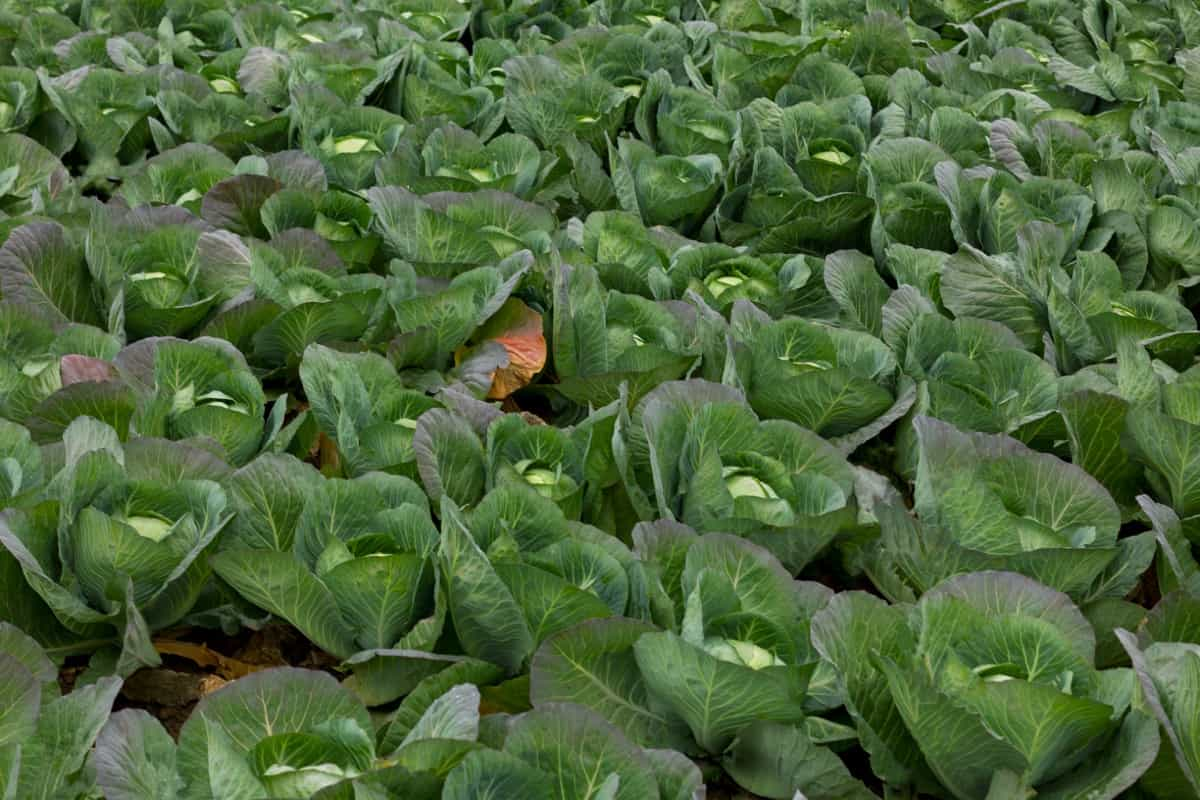Cabbage plants are popular among gardeners for their delicious and nutritious leaves. However, like any other plant, cabbage plants can face various problems that hinder their growth and productivity. This document will discuss some common problems that garden-grown cabbage plants may encounter and provide treatment and solutions for each issue.

10 Common Problems With Garden-Grown Cabbage Plants
Yellowing Leaves on Garden-grown Cabbage Plants
The potential cause of yellowing cabbage leaves is overwatering or poor drainage. When cabbage plants are exposed to excessive moisture, their roots may become waterlogged, leading to yellowing leaves. To remedy this, ensure the cabbage plants are planted in well-draining soil and avoid overwatering.
Cabbage seedlings turning yellow can be attributed to a condition called damping-off, which is caused by fungal pathogens in the soil. To prevent damping-off, using sterile planting materials and maintaining proper sanitation practices in the garden is essential. Additionally, providing adequate air circulation and avoiding overcrowding of the seedlings can help prevent the spread of fungal diseases.
Cabbage Plants Wilting in the Garden
- Cabbage plants require consistent moisture to thrive. Ensure that you provide them with adequate water, especially during dry periods. However, be cautious not to overwater, which can lead to root rot and wilting.
- Applying organic mulch around the cabbage plants can help retain soil moisture and regulate soil temperature.
- Cabbage plants prefer full sun exposure, but they can tolerate some shade. However, excessive heat can cause wilting. Planting cabbage in an area that receives morning sun and afternoon shade can help protect them from wilting due to extreme temperatures.
- Cabbage plants may also experience wilting after repotting. Transplanting can be stressful for plants, resulting in temporary wilting. To minimize this, follow these steps.
- Water the cabbage plants thoroughly before repotting.
- Choose a larger pot with good drainage to accommodate the root system.
- Gently loosen the root ball and remove any damaged or decaying roots.
- Place the plant in the new pot, ensuring it is at the same depth.
- Water the plant immediately after repotting and keep the soil consistently moist in the following days.
Pests Damaging Cabbage Plants in the Garden
Major pests of cabbage
One of the major constraints in the successful cultivation of cole crops like cabbage and cauliflower are insect pests, diamondback moth, aphids, stem borer, and Spodoptera litura. Cutworms, imported cabbageworm, cabbage looper, and cross-striped cabbage worms can each cause substantial damage to it. These pests cause serious damage to young transplants as well as causing serious leaf-feeding damage to older plants. To get rid of these bugs,
- Physically removing pests by hand can be effective for smaller infestations. Drop them into a bucket of soapy water to ensure they are destroyed.
- Neem oil, derived from the neem tree, is an organic insecticide that can be used to control pests on cabbage plants.
- To suffocate these tiny bugs, make a homemade spray by mixing 1 cup of vegetable oil, 1 1/2 cups of water, and two teaspoons of dish soap, then spray on the cabbage plant.
Common Diseases Affecting Garden-grown Cabbage Plants
One common disease affecting cabbage plants is black rot, caused by the bacterium Xanthomonas campestris. This disease often starts as small, V-shaped lesions on the leaves, which eventually expand and turn yellow. To control black rot, copper-based fungicides can be used. These fungicides help prevent the disease’s spread and protect healthy cabbage plants.
Bacterial leaf spot in cabbage plants is primarily caused by the bacteria Xanthomonas campestris pv. campestris. These highly contagious bacteria can easily spread through contaminated soil, water, tools, or infected plant debris. Consider using beneficial bacteria, such as Bacillus subtilis, as a preventive measure. These beneficial bacteria can outcompete the harmful bacteria and reduce the risk of infection.
Cabbage Plants Not Forming Heads in the Garden
The time it takes for a cabbage head to form largely depends on the cabbage variety and environmental factors. It takes approximately 70 to 120 days for a cabbage head to develop fully. Factors such as temperature, sunlight, and soil conditions play a crucial role in the growth rate of cabbage heads. Cabbage plants require cool temperatures, ideally around 15 to 18°C, for optimal head formation.
Fertilizer For Cabbage Head Farming: A diluted solution of a balanced (10-10-10) liquid fertilizer, compost tea, or fish emulsion should be used. Every two weeks, this can be repeated. After transplanting cabbage plants into a prepared garden bed, continue applying cabbage fertilizer every three to four weeks until heads appear.
In case you missed it: How to Control Cabbage Worms and Caterpillars: Organic, Chemical, Biological, and Cultural Control Methods

Cabbage Plants Stunted Growth in the Garden
Cabbages are heavy feeders, and this makes sense when you see the result. They go from a tiny seed dot and end up with a large layered head and many leaves. The reasons why your cabbage may have stunted growth include
- Lack of nitrogen: Cabbage has a lot of leaf growth surrounding the head and requires decent amounts of nitrogen. Without it, the leaf and head growth suffer.
- Calcium deficiency: A cabbage that doesn’t have access to the appropriate moisture can’t absorb calcium from the soil, resulting in a deficiency.
- Lack of Boron: A cabbage with a lack of boron will have tough and bitter heads.
To cover all bases, use a balanced 10-10-10 fertilizer. Cabbages also respond well to compost tea every two to three weeks. When the cabbage sets the head, use a fertilizer with less nitrogen to prevent the head from splitting.
Nutrient Deficiencies in Garden-grown Cabbage Plants
- Nitrogen Deficiency: The affected plants have symptoms of stunted growth, pale leaves, and overall reduced plant vigor. To remedy this deficiency, gardeners can apply nitrogen-rich fertilizers such as ammonium nitrate or blood meal to the soil.
- Phosphorus Deficiency; Symptoms like purplish discoloration on the leaves, reduced flowering, and slow growth can identify it. Gardeners can incorporate phosphorus-rich fertilizers such as bone meal or rock phosphate into the soil to address this deficiency.
- Potassium Deficiency: Cabbage plants can lead to weak stems, yellowing of older leaves, and increased susceptibility to pests and diseases. Gardeners can rectify this deficiency by applying potassium-rich fertilizers like potassium sulfate or wood ash to the soil.
In cabbages, ‘Whiptail’ is caused by the deficiency of molybdenum, which is characterized by the distortion of young leaves, a long mid-rib, and poorly developed ragged blades. The application of borax or sodium borate may control this condition.
Cabbage Plants Attacked by Caterpillars in the Garden
The Cabbage Worm: The cabbage worm, the imported cabbageworm or the cabbage white butterfly larva, is the most common pest affecting cabbage plants. These green caterpillars have a voracious appetite and feed on the cabbage leaves, often leaving behind large holes and chewed edges.
The Diamondback Moth Caterpillar: It is scientifically known as Plutella xylostella. These small, green caterpillars are known for their ability to burrow into the cabbage heads, making it difficult to detect their presence until the damage is already done. They can cause severe damage to the inner leaves, making the cabbage plant vulnerable to rot and disease. Spinosad is highly effective against a wide range of caterpillar species. It disrupts the caterpillar’s nervous system, leading to paralysis and death.
Cabbage Plants Experiencing Fungal Infections in the Garden
Clubroot: One of the most common fungal infections in cabbage plants. This disease attacks the roots of the plants, leading to stunted growth, wilting, and club-like swellings. To treat the clubroot, fungicides containing active ingredients like dimethomorph or cyazofamid are recommended. These fungicides effectively suppress the pathogen and help prevent further spread of the disease.
Downy Mildew: Downy mildew is yet another fungal infection that cabbage plants may encounter. Fungicides containing active ingredients like Mandipropamid or fluopicolide can effectively control downy mildew.
Cabbage Plants Bolting Prematurely in the Garden
One of the main causes of cabbage is bolting the exposure to high temperatures. Cabbage plants are cool-season crops that thrive in cooler temperatures ranging from 8-24°C. Cabbage plants tend to bolt when exposed to prolonged periods of high temperatures, usually above 80 degrees Fahrenheit.
In addition to temperature and daylight hours, stress factors can trigger cabbage bolting. Stressors such as inadequate watering, nutrient deficiencies, or plant damage can induce physiological changes that promote the development of flower stalks. To minimize stress and prevent bolting, provide optimal growing conditions for cabbage plants, including regular irrigation, balanced fertilization, and protection from pests and diseases.
In case you missed it: From Prevention to Treatment: The Ultimate Guide to Cabbage Clubroot Management

Conclusion
Knowing these common problems and their treatments, you can ensure healthier and more productive garden-grown cabbage plants. Regular monitoring, proper maintenance, and prompt action will help mitigate potential issues and allow your cabbage plants to thrive in your garden.
- Feed Your Flock for Less: Top 10 Tips to Save on Chicken Feed
- Ultimate Guide to Ossabaw Island Hog: Breeding, Raising, Diet, and Care
- Hatching Answers: The Top 10 Reasons Your Chickens Aren’t Laying Eggs
- Eggs and Economics: Breaking Down the Cost of Raising Backyard Chickens
- Defend Your Greens: Proven Methods to Keep Iguanas Out of Your Garden
- Ultimate Guide to Cinnamon Queen Chicken: A Comprehensive Guide for Beginners
- Ultimate Guide to California Tan Chicken: Breeding, Raising, Diet, Egg-Production and Care
- Ultimate Guide to Marsh Daisy Chicken: Breeding, Raising, Diet, and Care
- 10 Types of Chicken Farming Businesses You Can Start for Profits